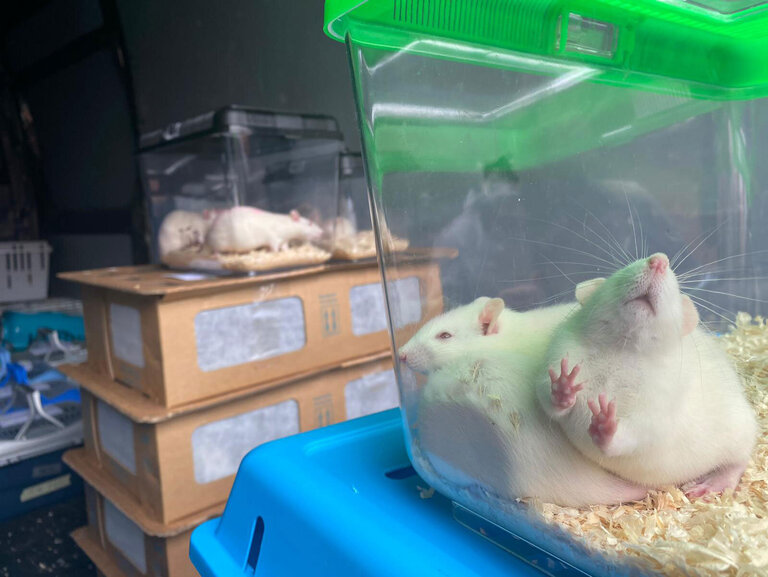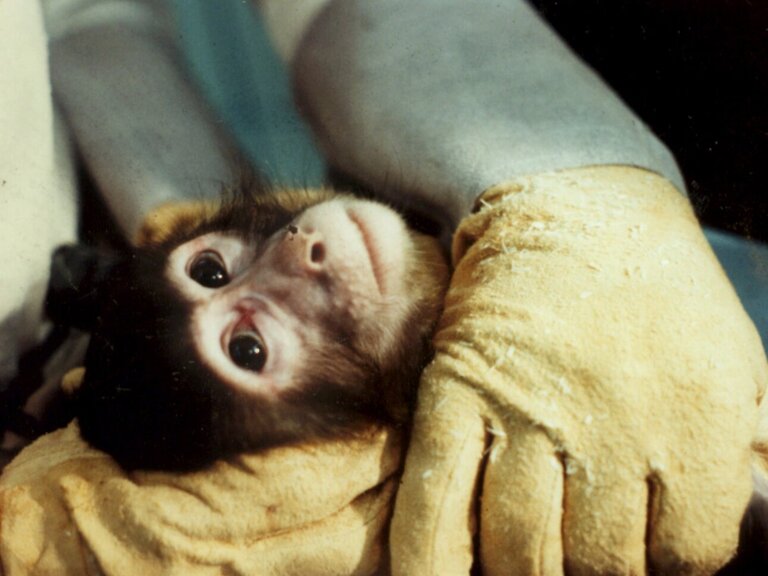The German Animal Welfare Federation has published a comprehensive “Guide to Animal-Free Science”, which highlights the diversity and possibilities of animal-free methods. The publication is aimed at anyone who wants to engage with the topic in a professional manner and provides an easily understandable scientific basis for the discourse in politics, science journalism, studies, authorities or the interested public. In the core section of the guide, the authors specifically compare 16 common animal experiments with a corresponding animal-free method.
“The topic of animal testing and animal-free science is very complex and is often the subject of controversial and highly emotional discussions, even among experts. With our guide, we want to provide the necessary background for a constructive, objective discourse. This includes, in particular, knowledge about animal-free methods,” says Kristina Wagner, head of the specialist department for animal-free science at the German Animal Welfare Federation. “The tools with which we can adapt research to our ethical standards as a society are already available in great variety. In the guide, we discuss the advantages as well as the challenges that still need to be overcome. For a successful transition to animal-free science, we urgently need more funding and a strategy with clearly defined goals and measures.”
PROGRESS IN MEDICINE AND RESEARCH WITHOUT ANIMAL TESTING
In addition to basic information and an interpretation aid for official figures and legal regulations, the guide also takes a look at the laboratory animals themselves. The specialist authors show how animal species such as mice, beagles, long-tailed macaques and pigs live naturally and for which experiments they are used. In the main section, the authors present selected animal experiments that are standard in Alzheimer's or Parkinson's research, for example, as well as in drug or chemical testing. The direct comparison with non-animal methods, such as organoid models, cell tests or human skin models, highlights the opportunities offered by modern scientific approaches. “Animal testing not only causes terrible animal suffering, but often lulls us into a false sense of security, as the results cannot be reliably transferred to humans,” says Wagner. “The key to progress in medicine and research lies in switching to modern and humane science without animal suffering. The time is more than ripe for a paradigm shift!”
FEDERAL GOVERNMENT HAS A DUTY
With its publication, the German Animal Welfare Federation is also reiterating its demands to the German government, which is currently launching the reduction strategy promised in the coalition agreement. The association welcomes this, but also warns that a mere reduction is not enough: “As stipulated by the EU Commission, the medium to long-term goal of a complete phase-out of animal testing should not be lost sight of. The current draft amendment to the Animal Welfare Act and the planned revision of the associated Animal Experiments Ordinance should also take this into account,” says Wagner.
Note for editors: The guide is available on the website of the German Animal Welfare Federation at www.tierschutzbund.de/wegweiser-tierversuchsfreie-wissenschaft. In addition, interviews with scientists who have either developed or work with the methods presented can also be viewed on the website.







